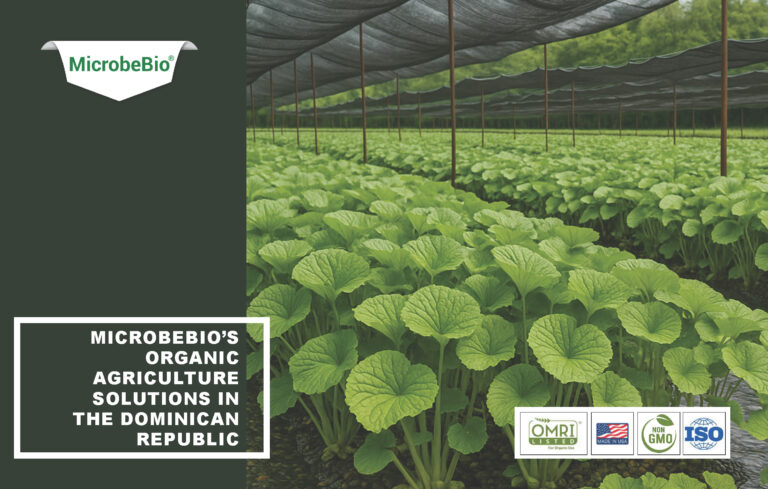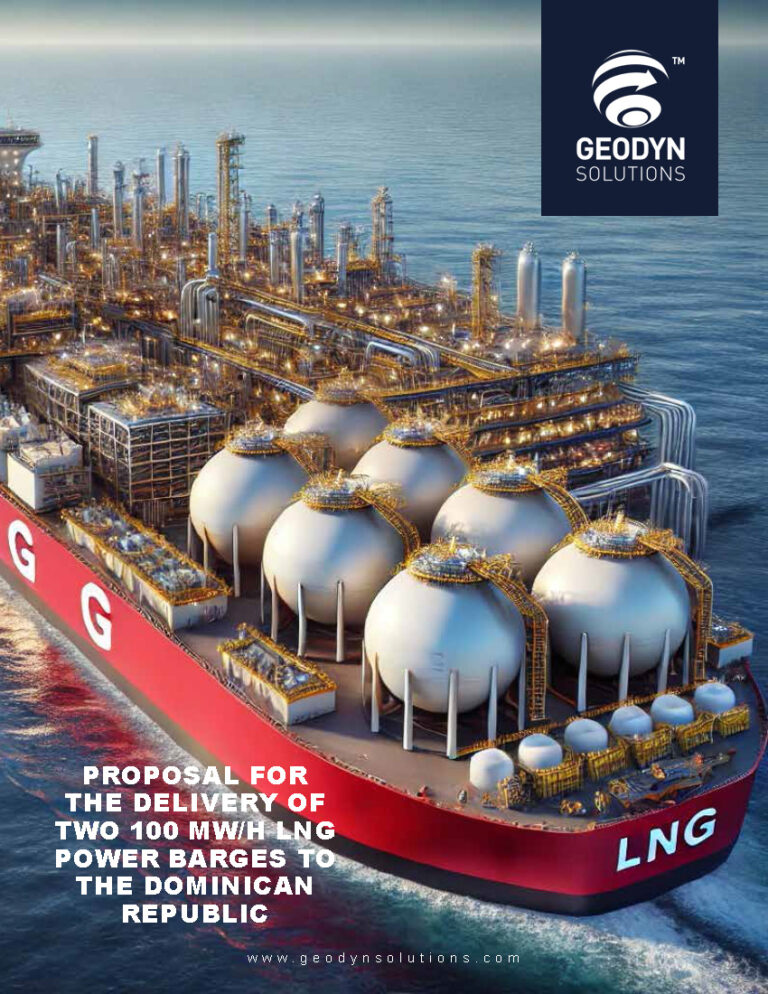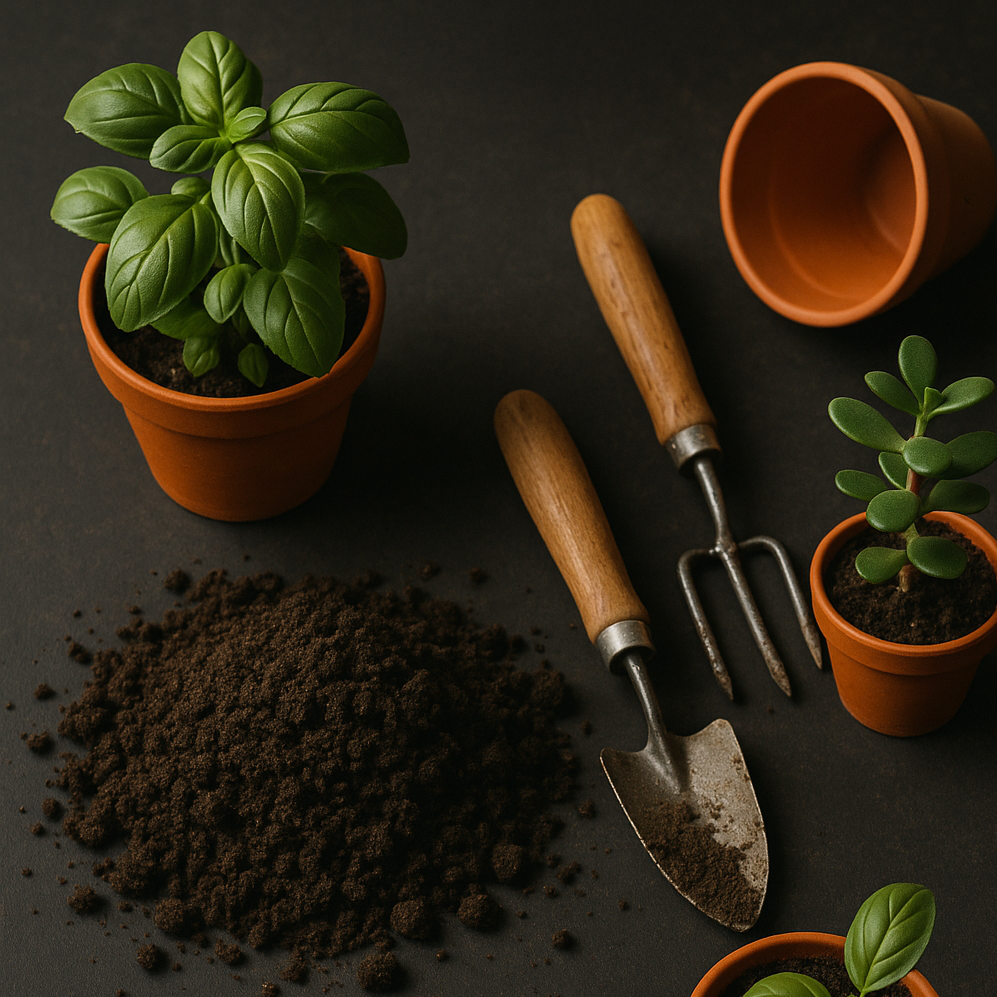Integrated Organic Fertilizer, Feed, Aquaculture, and Bioenergy Project in the Dominican Republic
Geodyn Solutions proposes a $100 million investment to establish an integrated agribusiness and bioenergy project in the Dominican Republic, leveraging abundant local resources to create a sustainable, high-impact operation. The project includes:
- Organic Fertilizer Factory: Producing high-quality organic fertilizers using poultry manure, seaweed, fish/shrimp waste, and microbial inoculants.
- Microbe Laboratory: Developing and testing microbial solutions for soil, plant, and animal health, with soil microbial identification capabilities.
- Feed Production Factory: Manufacturing poultry, fish, shrimp, and pig feed using local organic by-products.
- Aquaculture and Processing Facility: Establishing fish and shrimp farms with a processing plant for domestic and export markets.
- Biochar and Electricity Generation: Utilizing pyrolysis to produce biochar from farm waste and organic trash, coupled with an Organic Rankine Cycle (ORC) system, heat recovery boiler, and battery storage for energy self-sufficiency.
This project aims to position the Dominican Republic as a premier regional hub for organic fertilizer, feed, shrimp, and fish exports, creating 1,200+ jobs, reducing environmental impact, and delivering a projected ROI of 18-22% within 5 years. The initiative aligns with global sustainability goals and the Dominican Republic’s organic export success, which contributed $20.9 million in 2000.
Project Objectives
- Economic Impact: Generate $50-60 million in annual revenue by Year 5 through diversified product streams.
- Job Creation: Employ 1,200+ workers, including 300 skilled roles in microbiology, aquaculture, and engineering.
- Environmental Sustainability: Reduce waste, enhance soil health, and lower greenhouse gas emissions via circular economy practices.
- Market Leadership: Establish the Dominican Republic as the Caribbean’s leading exporter of organic fertilizers, feed, and aquaculture products.
- Energy Independence: Achieve 100% energy self-sufficiency through bioenergy systems, with surplus electricity sales to the grid.
Project Components and Technologies
1. Organic Fertilizer Factory
Purpose: Produce 50,000 tons/year of organic fertilizer using local resources (poultry manure, seaweed, fish/shrimp waste, algae, and microbial inoculants).
Technologies and Equipment:
- Composting System: Windrow composting with automated turners ($1.5M) for efficient decomposition of poultry manure and agro-waste.
- Granulation Line: Rotary drum granulator and dryer ($2M) for producing uniform fertilizer pellets.
- Vermicomposting Unit: Red wiggler worm beds ($0.5M) for high-quality vermicompost production.
- Screening and Mixing Equipment: Rotary drum screens and nutrient blenders ($0.8M) to ensure consistent quality.
- Packaging Line: Automated bagging and sealing machines ($0.7M) for 25-kg and 50-kg bags.
Raw Materials:
- Poultry manure (200,000 tons/year from local farms).
- Seaweed (50,000 tons/year from coastal harvesting).
- Fish/shrimp waste (20,000 tons/year from aquaculture facility).
- Microbial inoculants from on-site lab.
CapEx: $5.5M (equipment) + $2M (facility construction) = $7.5M
Output: Granulated organic fertilizer and vermicompost for domestic farmers and export to Caribbean and U.S. markets.
2. Microbe Laboratory
Purpose: Develop microbial inoculants (biofertilizers) for soil health, plant growth, and animal feed additives, with soil testing capabilities.
Technologies and Equipment:
- PCR and Sequencing Machines: Real-time PCR and Illumina MiSeq ($1.2M) for microbial identification and soil analysis.
- Fermentation Bioreactors: 5,000L bioreactors ($0.8M) for scaling microbial production (e.g., Trichoderma, Rhizobium).
- Incubators and Autoclaves: Controlled-environment incubators and sterilization units ($0.5M).
- Spectrophotometers and Microscopes: For microbial quantification and quality control ($0.3M).
- Clean Room: ISO 7 clean room for sterile operations ($0.7M).
CapEx: $3.5M (equipment) + $1.5M (lab construction) = $5M
Output:
- 10,000L/month of liquid biofertilizers (e.g., phosphate-solubilizing bacteria).
- Soil testing services for local farmers, identifying microbial profiles and nutrient deficiencies.
- Microbial additives for feed to enhance animal health.
3. Feed Production Factory
Purpose: Produce 30,000 tons/year of poultry, fish, shrimp, and pig feed using organic by-products and microbial additives.
Technologies and Equipment:
- Hammer Mills and Mixers: For grinding and blending raw materials ($1M).
- Pelletizing Line: Extruders and pelletizers ($1.5M) for high-quality feed pellets.
- Dryers and Coolers: Rotary dryers and counter-flow coolers ($0.8M) to ensure feed stability.
- Packaging System: Automated bagging for 10-kg and 50-kg bags ($0.6M).
Raw Materials:
- Fish/shrimp waste (10,000 tons/year from aquaculture).
- Crop residues (20,000 tons/year from local farms).
- Microbial protein from lab (1,000 tons/year).
CapEx: $4M (equipment) + $2M (facility construction) = $6M
Output: Nutrient-rich feed for on-site farms and regional markets, reducing reliance on imported feed.
4. Aquaculture and Processing Facility
Purpose: Farm 5,000 tons/year of shrimp and fish (tilapia) with a processing plant for domestic and export markets.
Technologies and Equipment:
- Recirculating Aquaculture Systems (RAS): 50 tanks with biofilters and oxygenation ($5M) for sustainable fish/shrimp farming.
- Processing Plant: Filleting, freezing, and packaging lines ($3M) for value-added products (e.g., frozen shrimp, fish fillets).
- Hatchery: Broodstock tanks and larval rearing units ($1.5M) for seed production.
- Water Treatment: UV sterilizers and reverse osmosis systems ($0.8M) for water quality.
CapEx: $10.3M (equipment) + $4M (facility construction) = $14.3M
Output:
- 3,000 tons/year shrimp and 2,000 tons/year tilapia.
- Processed products for export to U.S., EU, and Caribbean markets, leveraging Dominican Republic’s organic export expertise.
5. Biochar and Electricity Generation
Purpose: Produce 10,000 tons/year of biochar and 5 MW of electricity using pyrolysis, ORC, and heat recovery systems.
Technologies and Equipment:
- Pyrolysis Unit: Continuous screw pyrolyzer ($4M) processing 20,000 tons/year of farm waste and organic trash.
- Biochar Processing: Screening and bagging system ($0.8M) for soil amendment sales.
- ORC Turbine: 5 MW ORC system ($5M) for electricity generation from pyrolysis syngas.
- Heat Recovery Boiler: To capture waste heat for drying processes ($1.5M).
- Battery Storage: 10 MWh lithium-ion battery ($3M) for grid stability and surplus sales.
- Gas Cleaning System: Scrubbers and filters ($1M) to minimize emissions.
Raw Materials:
- Poultry manure (50,000 tons/year).
- Crop residues and organic trash (30,000 tons/year).
CapEx: $15.3M (equipment) + $3M (facility construction) = $18.3M
Output:
- Biochar as a soil amendment, improving soil fertility and carbon sequestration.
- 5 MW electricity, meeting 100% of project energy needs with surplus sold to the grid.
Capital Expenditure (CapEx) Summary
Component | Equipment ($M) | Construction ($M) | Total ($M) |
|---|---|---|---|
Organic Fertilizer Factory | 5.5 | 2.0 | 7.5 |
Microbe Laboratory | 3.5 | 1.5 | 5.0 |
Feed Production Factory | 4.0 | 2.0 | 6.0 |
Aquaculture & Processing | 10.3 | 4.0 | 14.3 |
Biochar & Electricity | 15.3 | 3.0 | 18.3 |
Subtotal | 38.6 | 12.5 | 51.1 |
Contingency (10%) | – | – | 5.1 |
Land Acquisition | – | – | 5.0 |
Working Capital | – | – | 10.0 |
Permits & Engineering | – | – | 3.0 |
Total CapEx | – | – | 74.2 |
Note: $25.8M reserved for phased expansion (e.g., additional aquaculture tanks, pyrolysis units) by Year 3.
Financial Projections and ROI
Revenue Streams:
- Organic Fertilizer: 50,000 tons/year at $200/ton = $10M/year.
- Biofertilizers: 120,000L/year at $5/L = $0.6M/year.
- Feed: 30,000 tons/year at $400/ton = $12M/year.
- Shrimp/Fish: 5,000 tons/year at $5,000/ton = $25M/year.
- Biochar: 10,000 tons/year at $300/ton = $3M/year.
- Electricity Surplus: 10,000 MWh/year at $100/MWh = $1M/year.
Total Revenue (Year 5): $51.6M
Operating Expenses:
- Raw materials: $8M/year.
- Labor (1,200 workers): $12M/year (avg. $10,000/worker).
- Maintenance and utilities: $5M/year.
- Other (marketing, logistics): $3M/year.
Total OpEx (Year 5): $28M
EBITDA (Year 5): $51.6M – $28M = $23.6M
ROI Calculation:
- Total investment: $100M.
- Cumulative EBITDA (Years 1-5, assuming ramp-up): $70M.
- Net present value (NPV) at 10% discount rate: $15M.
- ROI: 18-22% by Year 5, depending on export market penetration.
Job Creation
- Direct Jobs: 1,200 (300 skilled: microbiologists, engineers, aquaculture specialists; 900 semi-skilled: factory workers, farm laborers).
- Indirect Jobs: 2,000+ (suppliers, logistics, distribution).
- Training Programs: Partner with local universities and cooperatives (e.g., Cooperativa Francisco del Rosario Sánchez) for workforce development.
Environmental Impact
- Waste Reduction: Diverts 300,000 tons/year of organic waste (manure, fish/shrimp waste, crop residues) from landfills.
- Soil Health: Biofertilizers and biochar enhance soil fertility, reducing chemical fertilizer use by 20-30%.
- Carbon Sequestration: Biochar sequesters 25,000 tons CO2e/year.
- Emission Reduction: Pyrolysis and ORC reduce greenhouse gas emissions by 15,000 tons CO2e/year compared to traditional waste disposal.
- Water Quality: RAS and waste treatment minimize aquaculture runoff, protecting coastal ecosystems.
Strategic Advantages
- Market Demand: Growing global demand for organic fertilizers (+10% CAGR) and sustainable aquaculture products.
- Export Potential: Leverage Dominican Republic’s established organic export infrastructure (e.g., bananas, cocoa) for fertilizer and aquaculture products.
- Government Support: ProDominicana and tax incentives for green projects facilitate investment.
- Local Resources: Abundant poultry manure, seaweed, and fish/shrimp waste ensure low input costs.
- Energy Security: Bioenergy systems mitigate reliance on volatile fossil fuel markets.
Implementation Plan
Year 1:
- Land acquisition (500 hectares in Azua, near organic farming cooperatives).
- Permitting and engineering design.
- Construction of fertilizer, feed, and microbe lab facilities.
- Procurement of pyrolysis and ORC equipment.
Year 2:
- Complete aquaculture and processing facility construction.
- Begin fertilizer and feed production (50% capacity).
- Establish microbe lab and start soil testing services.
- Commission pyrolysis unit and ORC system.
Year 3:
- Scale to full production capacity.
- Launch export operations (U.S., EU, Caribbean).
- Expand aquaculture with additional tanks ($10M from reserve).
- Sell surplus electricity to grid.
Year 4-5:
- Optimize operations for cost efficiency.
- Explore new markets (e.g., Central America).
- Reinvest profits for second pyrolysis unit ($15M from reserve).
Risks and Mitigation
- Market Risk: Fluctuating global prices for fertilizers and aquaculture products.
- Mitigation: Diversified revenue streams and long-term export contracts.
- Operational Risk: Equipment downtime or microbial production issues.
- Mitigation: Redundant systems and on-site maintenance team.
- Regulatory Risk: Delays in permits or export certifications.
- Mitigation: Engage ProDominicana and local consultants early.
- Environmental Risk: Potential water contamination from aquaculture.
- Mitigation: Advanced RAS and waste treatment systems.
Conclusion
This $100 million investment will transform the Dominican Republic into a regional leader in organic fertilizers, feed, aquaculture, and bioenergy. By leveraging local resources, cutting-edge technologies, and sustainable practices, Geodyn Solutions can achieve a robust 18-22% ROI, create 1,200+ jobs, and deliver significant environmental benefits. The project aligns with the Dominican Republic’s organic export legacy and global sustainability trends, ensuring long-term economic and social impact.
Recommendation: Proceed with Phase 1 (land acquisition, permitting, and initial construction) in Q3 2025, with full operations by Q4 2027.



